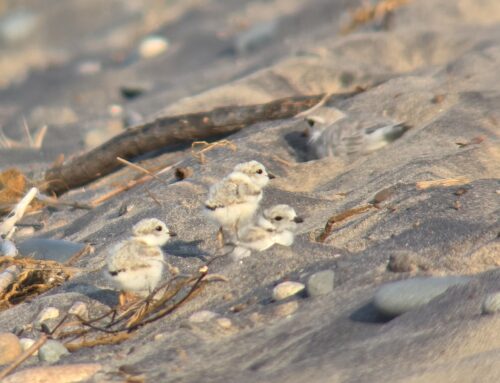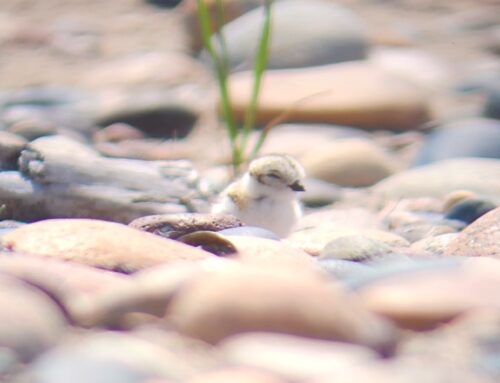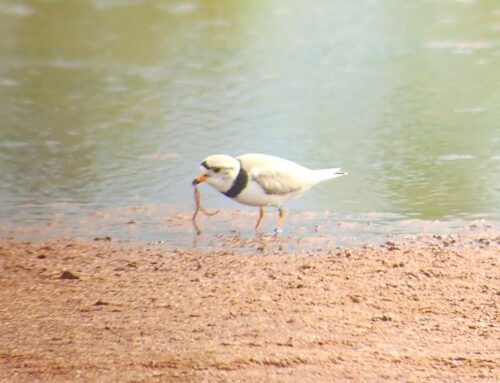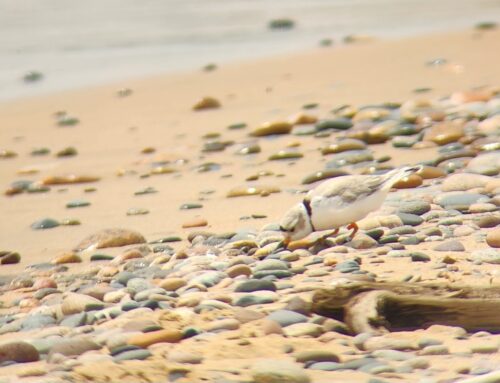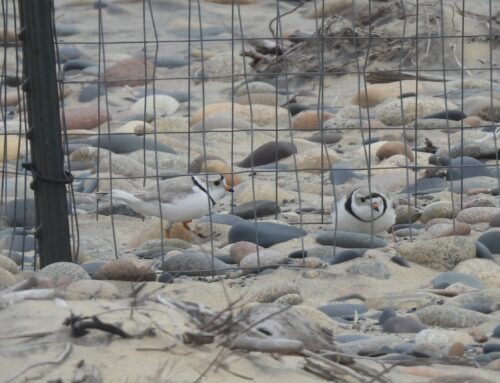…and, he has been since July 3. Hannah (who you’ll recognize as WPBO’s summer assistant bander) and I were enjoying one of those rare times of the day that we’re both awake with an afternoon beach walk. We paused at the nest exclosure; when I’d been out earlier that day, the adult plovers were still incubating. I didn’t expect anything to have changed. But RBG, the female, was on the nest, and we noted that she seemed awfully fluffed-out. Suddenly, we saw a chick pop out from under her wing and soon, a second chick followed! Immediately, we were in love.

Four-day-old Piping Plover chick. Alison Vilag photo.
Our plover pair produced four eggs: one was not viable; the fate of the other remains unknown. But–two weeks later–we still have two chicks. This makes me very happy.
Since the time they were hatched, they’ve grown–they’ve grown a lot. Some days, it’s seemed that when I leave, the chicks have grown bigger than they were when I arrived. Looking at them, recalling their appearance at hatch, and then acknowledging that all the chicks’ changes have been built from the invertebrates they’ve consumed boggles my mind a little.

Four day old Piping Plover chick. Alison Vilag photo.
This summer, as my sense of place at Whitefish Point has further developed, I’ve become overwhelmingly conscious about caring, intentionally, for the space I occupy–physical and spiritual; tangible and figurative; both the human and the non-human elements of my surroundings. Mary Oliver said that with attention comes devotion. Whether I’m laying on my belly in the sand watching the chicks try bold new things (e.g. venturing to the Superior waterline) or hurrying across the beach to stave off an unleashed dog, I’ve certainly felt my attention foster devotion–to this place, to these birds.
Thank you, as always, for reading.
–Alison Vilag, WPBO Piping Plover monitor & outreach specialist
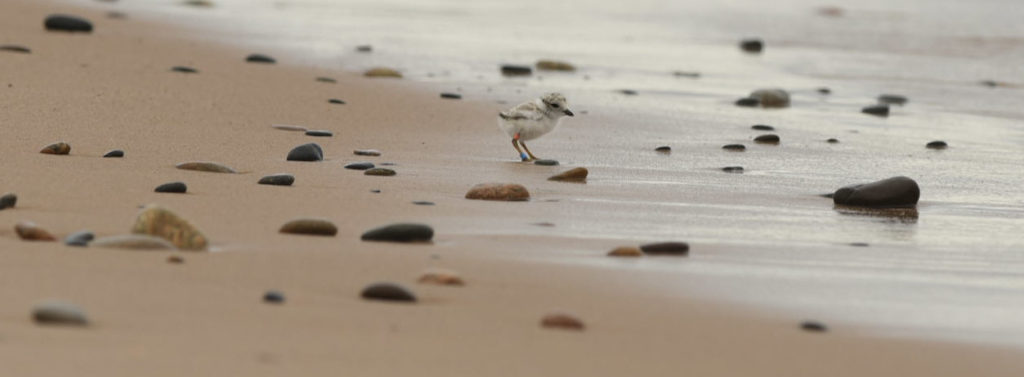
9 day old Piping Plover chick testing its (newly-banded) sea legs. Alison Vilag photo.


